1. The Galaxy Tab Universe
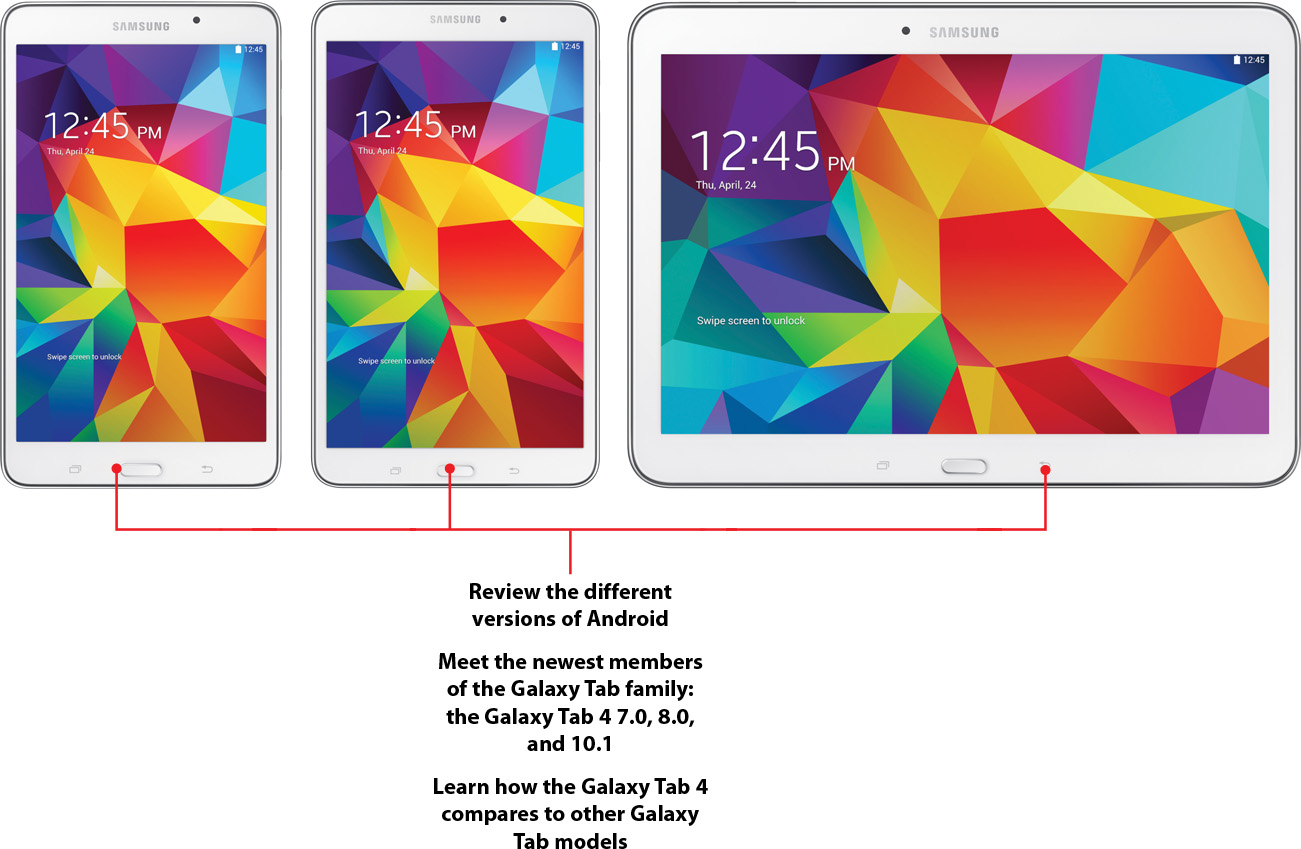
In this chapter, you’re introduced to the different versions of Android and the different models of the Galaxy Tab including the Galaxy Tab 4. Topics in this chapter include:
![]() The three different versions of the Android operating system
The three different versions of the Android operating system
![]() The three models of the Galaxy Tab 4
The three models of the Galaxy Tab 4
![]() A comparison of Galaxy Tab 4 and other models in the Galaxy Tab family
A comparison of Galaxy Tab 4 and other models in the Galaxy Tab family
If you’re brand new to the Galaxy Tab 4, start with this chapter so you can learn more about your new tablet and also learn more about the Android operating system that the Galaxy Tab 4 uses. If you want to get started right away, proceed to Chapter 2, “Meeting the Galaxy Tab 4.”
First, a Look at Android
The Galaxy Tab 4 runs the Android operating system that is produced and maintained by Google. As of this writing, the latest IDC report that tracked mobile operating system marketing share stated that in the first quarter of 2014 Android commanded 81 percent market share, well above the second place iOS used on iPhones and iPads (http://www.idc.com/prodserv/smartphone-os-market-share.jsp). As of May 2014, Samsung owns 22 percent of worldwide tablet market share, which is second only to Apple’s 33 percent (https://www.idc.com/getdoc.jsp?containerId=prUS24833314).
There are several versions of Android currently available that run on various smartphones and tablets. Each version is best known by the nicknames Google gives it. Since version 1.5, Google has given the name of a sweet treat to every new version; version 1.5 was known as Cupcake. (There were two previous versions before Cupcake that didn’t have a nickname, so Google decided to give the third release of Android a nickname starting with the third letter of the alphabet.)
Galaxy Tab models run one of the following Android versions:
• Version 2.2, or Froyo (short for frozen yogurt), runs on the original Galaxy Tab 7.0. You can learn more about using Froyo on the Galaxy Tab 7.0 in Que’s 2011 book My Samsung Galaxy Tab (ISBN 978-0-7897-4797-6).
• Version 2.3, Gingerbread, was the most widely used version of Android as of early July 2012. In addition to including user interface improvements, Gingerbread was designed for use on extra-large screen resolutions and provided improved network performance.
• Version 3, Honeycomb, was the first version optimized for use with tablets. It included more user interface improvements, support for video chat using Google Talk, and the ability to encrypt all user data.
• Version 4, Ice Cream Sandwich, included more improvements to the user interface, improved features, such as real-time speech-to-text dictation, and new apps, such as a photo editor. You can learn more about using Ice Cream Sandwich on the Galaxy Tab 2 in Que’s 2013 book My Samsung Galaxy Tab 2 (ISBN 978-0-7897-5038-9).
• Version 4.1, Jelly Bean, includes a new interface layout for tablets with smaller screens such as the Galaxy Tab 3 7.0, Google Chrome as the new web browser, and the Google Now personalized search app. This version of Jelly Bean was the most widely used version of Android as of early June 2014 (http://developer.android.com/about/dashboards/index.html).
• Version 4.2, which is also called Jelly Bean, includes everything in Version 4.1 as well as the ability to place widgets on your Lock screen, a redesigned Camera app, and a Gesture Keyboard that predicts what you’re trying to type as you glide your fingers over the keys. You can learn more about using Android 4.2 Jelly Bean on the Galaxy Tab 3 in Que’s 2014 book My Samsung Galaxy Tab 3 (ISBN 978-0-7897-5193-5).
• Version 4.3, which Google decided to also call Jelly Bean, includes a new camera user interface, support for 4K resolution video, support for five more languages, and a restricted access mode for new user profiles.
• Version 4.4, KitKat (named for one of the Google employees’ favorite chocolate candy bars), includes an updated interface, the ability to print wirelessly, and a built-in screen recording feature. The text and screenshots in this book are based on the latest version of KitKat for the Tab 4 (as of this writing), Version 4.4.2.
You find out more about the versions each Galaxy Tab model uses later in this chapter.
The Newest Members: The Galaxy Tab 4 Family
Before getting into all the Galaxy Tab models Samsung offers, it’s important to talk about the subject of this book and the three newest additions to the Galaxy Tab family: The Galaxy Tab 4 7.0, 8.0, and 10.1. All three models were released at the same time, run KitKat, and play the latest audio and video files. However, each model has differences you should know about.
The Galaxy Tab 4 7.0
The Galaxy Tab 4 7.0 has a 7" screen, which explains how it got its name. The Tab 4 7.0 only comes with 8GB of total data storage, but it does contain a microSD slot that can bring your total storage capacity to 32GB. The Tab 4 7.0 also includes
• Wi-Fi connectivity
• 1200 × 800 pixel screen resolution
• 1.3 megapixel front camera
• 3.0 megapixel rear camera
• 9.74 ounces (0.61 pound) total weight
• A 4,000mAh battery
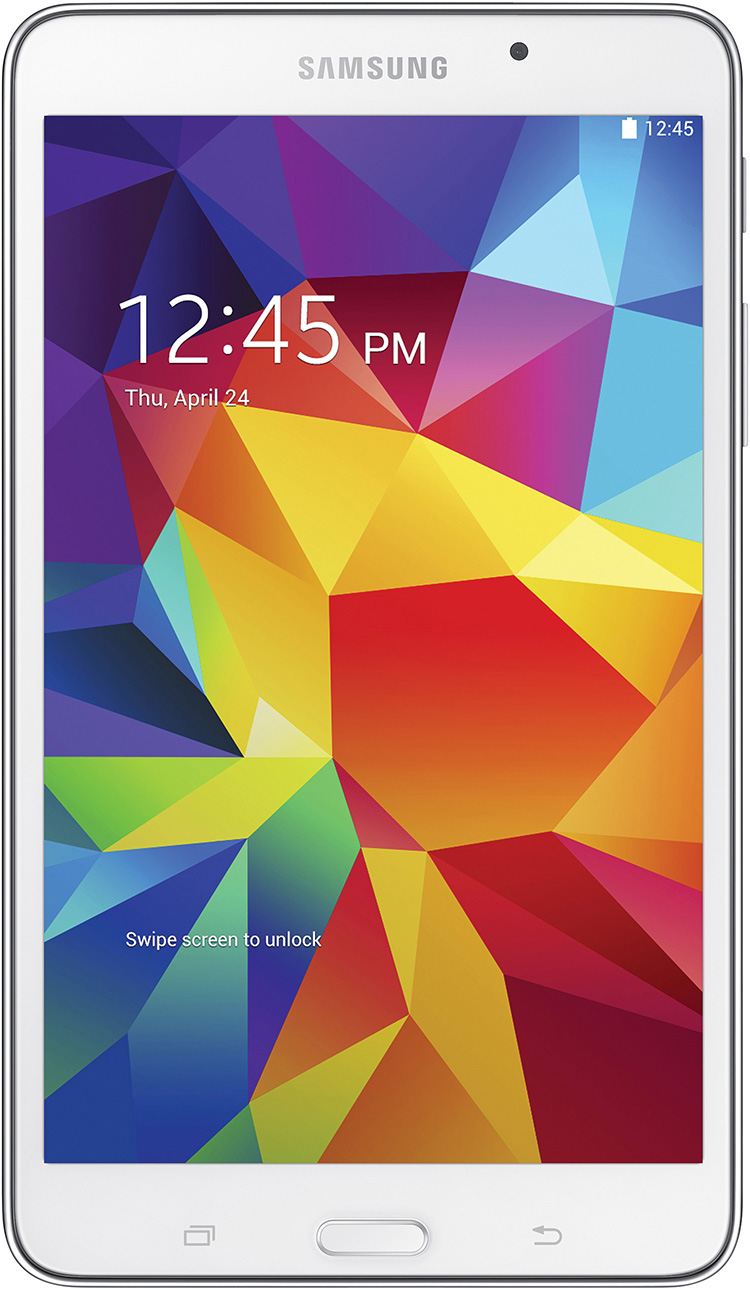
If you prefer to hold a tablet in one hand comfortably but you also want more screen space than a smartphone then consider the Tab 4 7.0. Unlike some of the e-readers out there (such as Amazon’s Kindle), the Tab 4 7.0 comes with the full version of KitKat as well as the Kindle app.
The Galaxy Tab 4 8.0
The Galaxy Tab 4 8.0 has an 8.0" screen and has Wi-Fi connectivity. The Tab 4 8.0 also includes
• 1200 × 800 pixel screen resolution
• 16GB of data storage with a microSD slot that can bring total storage to 64GB
• 1.3 megapixel front camera
• 3.0 megapixel rear camera
• 11.11 ounces (0.69 pound) total weight
• A 4,450mAh battery
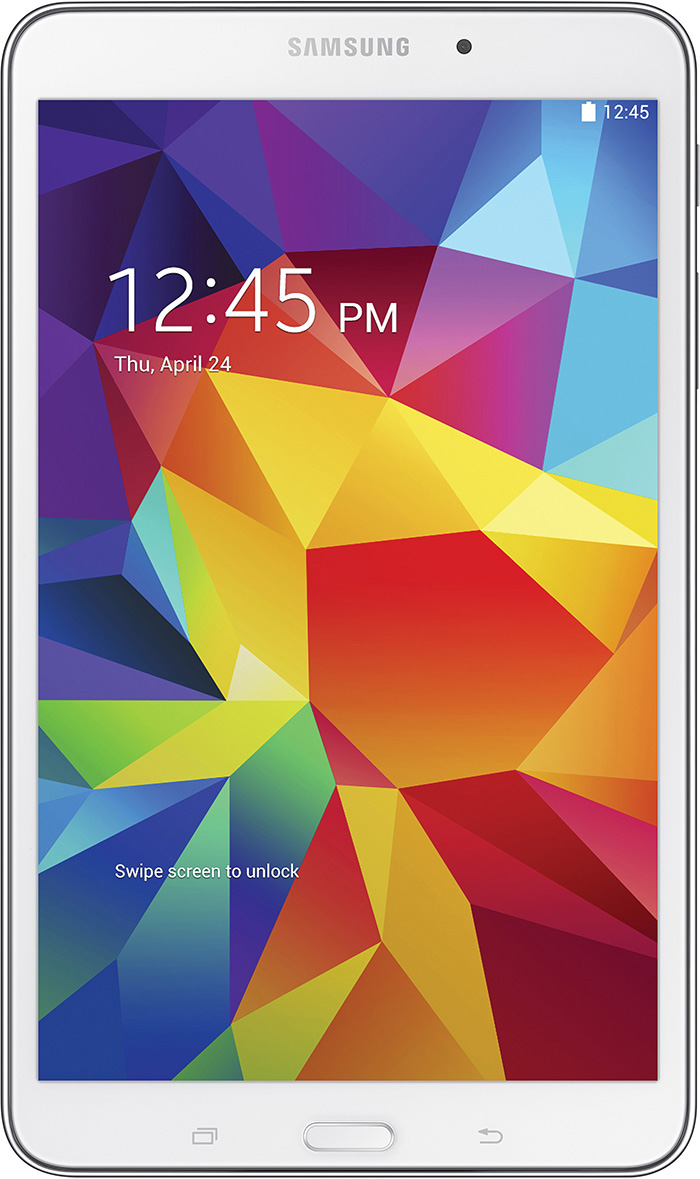
As with the Galaxy Tab 4 7.0 model, you can hold the Galaxy Tab 4 8.0 in one hand comfortably but you get more screen space than the Tab 4 7.0. You also get a higher screen resolution and more battery capacity in exchange for a larger and slightly heavier unit.
The Galaxy Tab 4 10.1
The Galaxy Tab 4 10.1 is so named because of its 10.1" screen, which is one of the largest screens you can find on a tablet. The Tab 4 10.1 also includes
• Wi-Fi connectivity
• 16GB of data storage with a microSD slot that can bring total storage to 64GB
• 1200 × 800 pixel screen resolution
• 1.3 megapixel front camera
• 3.0 megapixel rear camera
• 17.28 ounces (1.08 pound) total weight
• A 6,800mAh battery
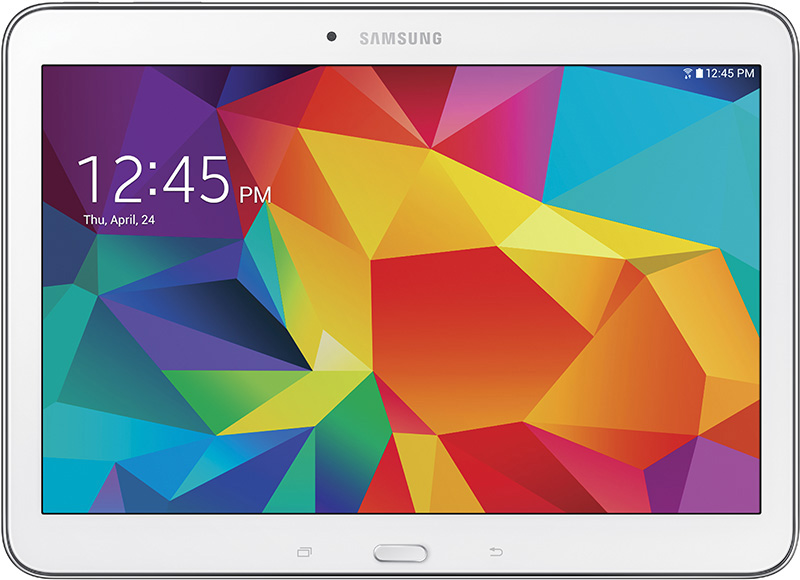
You can hold the Galaxy Tab 4 10.1 in one hand, but it’s usually safer to hold it with both hands. If you want to have the most screen space available so you can use it for tasks that you’ve previously done on your laptop (such as taking notes or watching movies) then the Tab 4 10.1 might be the right tablet for you.
If you want to learn more about each Tab 4 model and the differences between them, skip ahead to Chapter 2.
Comparing the Tab 4 to Other Tabs
There are now a total of seven different Galaxy Tabs, including the Tab 4 family. What’s more, the Galaxy Note is a smartphone/tablet hybrid that’s included in this discussion.
Galaxy Tab 7.0
This is the original Galaxy Tab that Samsung produced. The Tab 7.0 was originally positioned as a smaller alternative to the iPad, which came in only one size at the time the Tab 7.0 was first released. Samsung decided that their Tab models would run various versions of Google’s Android mobile operating system so the Tab would be compatible with other Android phones just as the iPad is compatible with the iPhone. The Tab 7.0 runs Froyo.
Though the Tab 7.0 Plus was designed to eventually replace the Tab 7.0, the original Tab 7.0 is still offered by AT&T, Sprint, Verizon, and T-Mobile. You can also buy a Wi-Fi only model. Prices vary between the carriers and the Wi-Fi version.
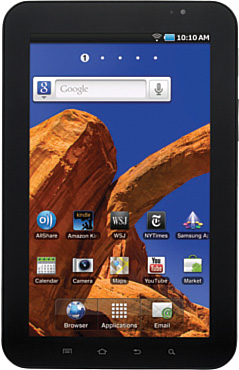
Galaxy Tab 7.0 Plus
The Tab 7.0 Plus is a sleeker version of the original Tab 7.0 that runs Honeycomb and has some more hardware and software features than the original Tab. Therefore, the Tab 7.0 Plus doesn’t have the buttons below the screen like the original Tab 7.0 or the Galaxy Note. Instead, the Tab 7.0 Plus works like its larger siblings, the Tab 8.9 and Tab 10.1. The Tab 7.0 Plus is only offered by T-Mobile or as a Wi-Fi model. If you choose the Wi-Fi model, there are several different online vendors that sell it.
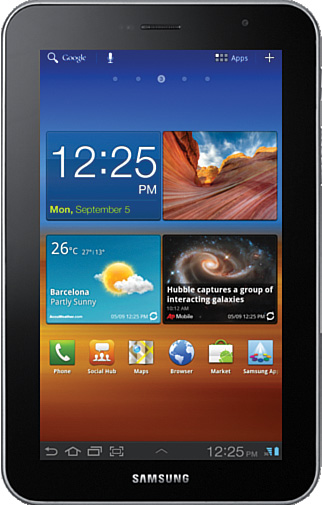
Galaxy Tab 7.7
The Tab 7.7 is not only a bit larger than the 7.0 models but it also boasts some interesting features. The screen is based on AMOLED technology with a 1200 × 800 pixel resolution. (AMOLED stands for active-matrix organic light emitting diode.) The Tab 7.7 includes a more powerful battery—5,100mAh compared to 4,000mAh on the 7.0 Plus—that results in longer usage times on a single charge. And unlike other Tab models, you can make and receive voice calls with the Tab 7.7.
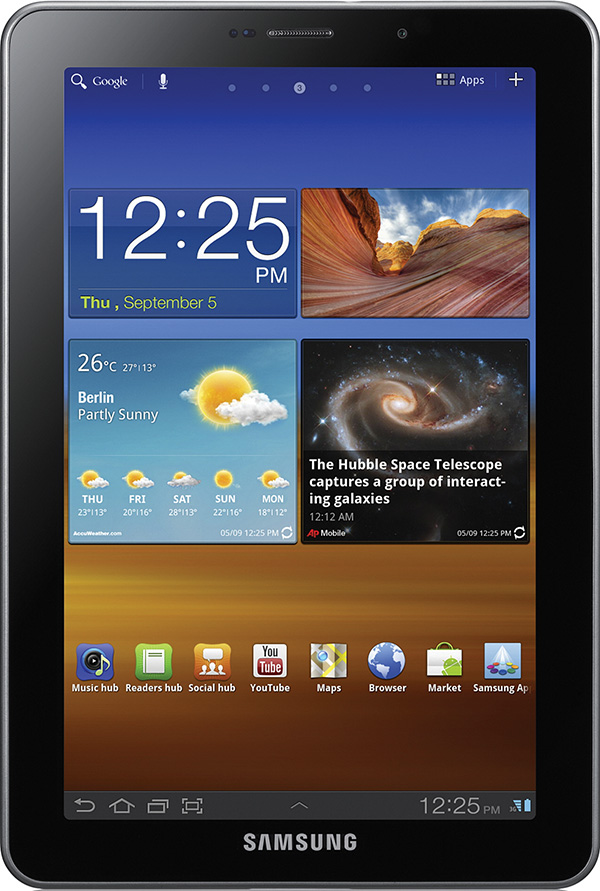
Galaxy Tab 8.9
The Galaxy Tab 8.9 not only has a larger screen and a larger footprint, it also has a 1280 × 800 pixel screen. Like the 7.0 Plus, 7.7, and 10.1 models, the 8.9 runs Honeycomb. The Tab 8.9 is only offered by AT&T with 16GB of memory, although you can also buy a 16GB or 32GB Wi-Fi model from several online vendors.
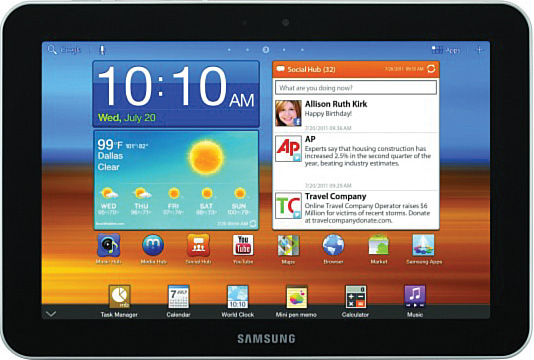
Galaxy Tab 10.1
If you’re looking for the largest Tab model, or a larger Tab that’s offered by more carriers, then you should consider the Tab 10.1. Like the Tab 8.9, the Tab 10.1 includes a screen that has 1280 × 800 pixel resolution and a screen size of 10.1". This screen is not only larger than the iPad 2 screen but also has greater resolution. The battery (7,000mAh) is the most powerful of any Tab and provides 9 hours of usage on a single charge.
Like the Tab 8.9, you can buy a Tab 10.1 with 16GB or 32GB of memory. The Tab 10.1 is offered by Verizon and T-Mobile but also comes in a Wi-Fi model as well. As of this writing, the Tab 10.1 was not being sold because of a patent dispute between Apple and Samsung. What’s more, the Tab 10.1 was effectively replaced by the Tab 2 10.1, which Samsung is selling as of this writing.
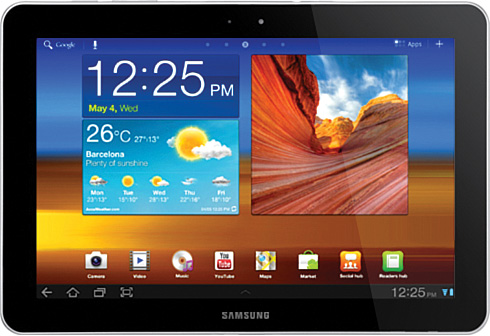
Galaxy Tab 2 7.0 and 10.1
The Galaxy Tab 2 was the successor to the original Tab family, just as the Tab 4 family is the successor to the Tab 3 family. However, just as with the Tab 7.0, the Tab 2 7.0 and 10.1 models are still available on the Samsung website (www.samsung.com) if you want to purchase them. The Tab 2 7.0 is so named because of its 7" screen and you can purchase the unit from Verizon or in a Wi-Fi version.
The Tab 2 10.1 is so named because of its 10.1" screen. You can purchase the Tab 2 10.1 in a Wi-Fi version and also from a variety of carriers including AT&T, Verizon, Sprint, and T-Mobile.
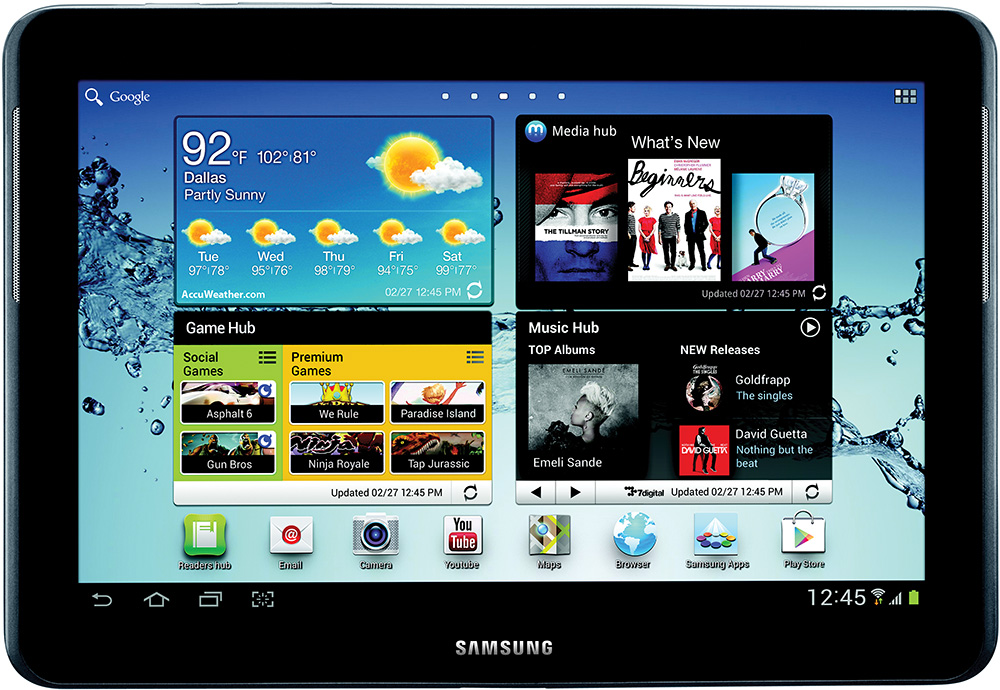
You can get more information about the Tab 2 series on the Samsung website and in the Que book My Samsung Galaxy Tab 2 (ISBN: 978-0-7897-5038-9).
Galaxy Tab 3 7.0, 8.0, and 10.1
The Galaxy Tab 3 was the successor to the Tab 2 family. However, just as with the Tab 2 7.0 and 10.1 models, you can purchase the Tab 3 7.0, 8.0, and 10.1 models on the Samsung website (www.samsung.com).
The Tab 3 7.0 is so named because of its 7" screen, and you can purchase the unit from Verizon, Sprint, T-Mobile, or AT&T; you can also purchase a Wi-Fi version. What’s more, you can even purchase a Tab 3 7.0 in a Kids version that has an interface friendly to kids, parental controls, and an optional stylus.
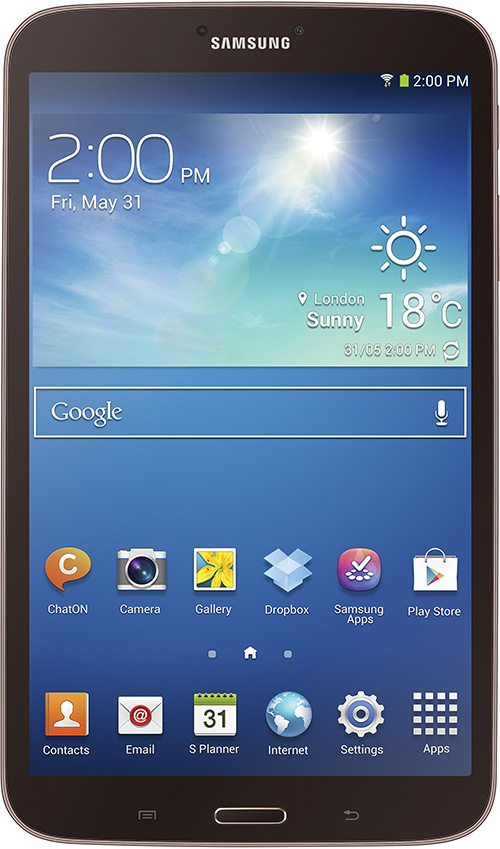
The Tab 3 8.0 is so named because it has an 8.0" screen. You can only purchase this version of the Tab 3 in a Wi-Fi version.
The Tab 3 10.1 is so named because of its 10.1" screen. You can purchase the Tab 3 10.1 only in a Wi-Fi version.
You can get more information about the Tab 3 series on the Samsung website and in the Que book My Samsung Galaxy Tab 3 (ISBN: 978-0-7897-5193-5).
Galaxy Note and Note Pro
In late 2011 and early 2012, Samsung released the 5.3" version of its Galaxy Note “phablet,” which is a device that’s larger than a phone but smaller than a tablet and has features of each. For example, the Note has buttons below the screen as the Tab 7.0 does because the Note runs Gingerbread. The Note comes with a stylus called an S Pen so you can manipulate screen elements, handwrite notes, and draw on apps created for use with the Note.
Samsung subsequently created the Note 8.0 and 10.1 models to replace the original Galaxy Note, but both new models still come with the S Pen. These new Note models are also available in 4G LTE versions from a variety of carriers, and the Android operating system version varies from model to model. For example, the AT&T version of the Note 8.0 runs Android 4.4 (KitKat) but the Wi-Fi version runs Android 4.1 (Jelly Bean).
In early 2014, Samsung released the Galaxy Note Pro 12.2 model that’s sold alongside the Note 8.0 and 10.1 models. The Note Pro 12.2 has a 12.2" screen (hence the name of the device) with 2560 × 1600 pixel resolution, up to 64GB of memory, and an 8 megapixel rear camera in addition to the standard S Pen. The Note Pro 12.2 also runs Android 4.4 (KitKat), and is available in a Wi-Fi-only version as well in 4G LTE versions from AT&T and Verizon.

Galaxy Tab Pro and Tab S
In 2014, Samsung introduced two high-end Galaxy Tab families: The Tab Pro and the Tab S.
Samsung introduced the Tab Pro series early in 2014 and has the same specs as the Note Pro with the exception that the Tab Pro doesn’t include the S Pen. The Tab Pro comes in a 12.2" screen version as the Note Pro does, and the Tab Pro also comes in 8.4" and 10.1" screen versions.
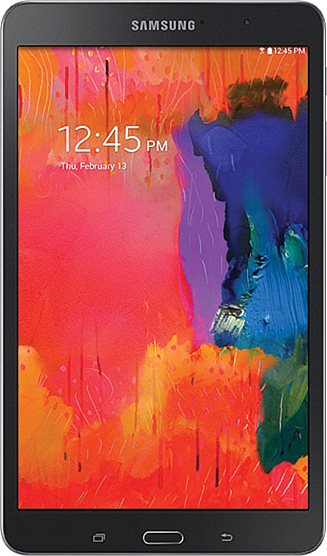
In mid-2014, Samsung announced its top-of-the-line Galaxy S series that comes in 8.4" and 10.5" screen versions. Both models sport a high-resolution 2560 × 1600 pixel resolution, 8 megapixel rear camera, memory up to 128GB, and Android 4.4 (KitKat). The Tab S is also lighter than its Tab Pro brethren, and as of this writing both versions only offer Wi-Fi connectivity.
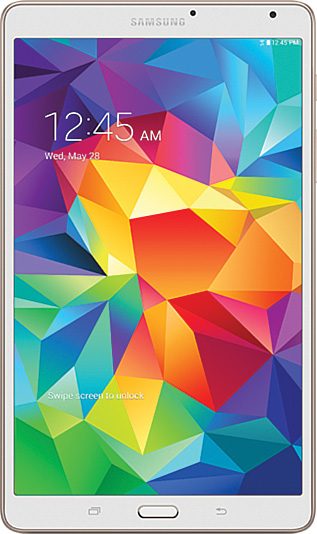
Choosing from all these models can be confusing or overwhelming, but you can’t say that Samsung doesn’t have an offering for nearly every potential tablet user. You can learn more about the Galaxy Tab and Note families and get updated information by visiting Samsung’s website (www.samsung.com).
